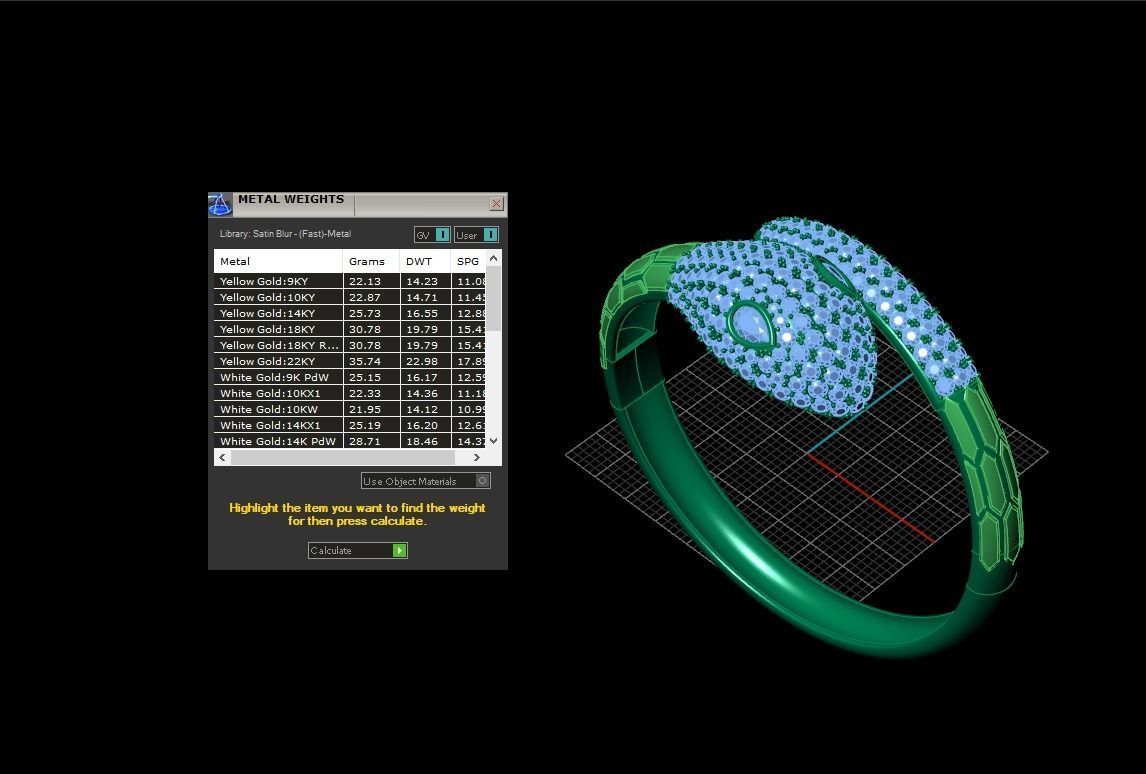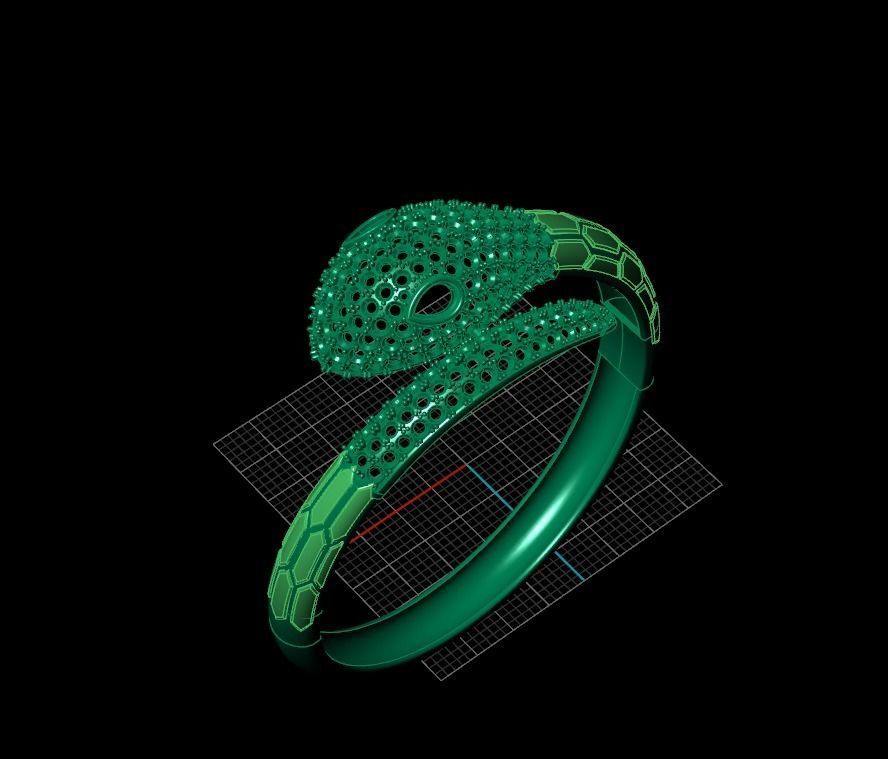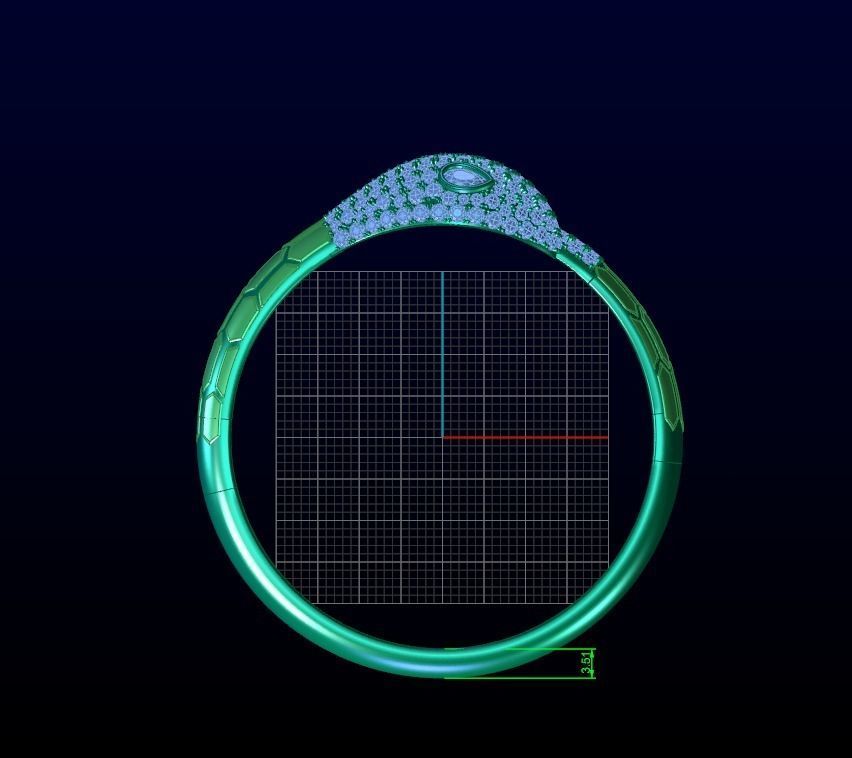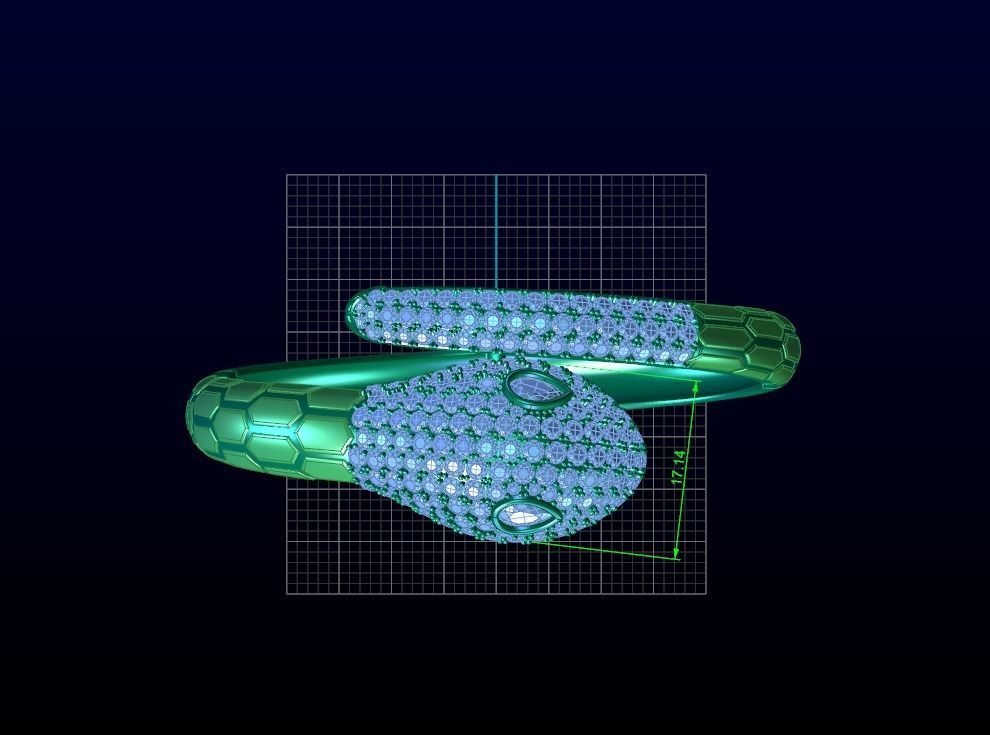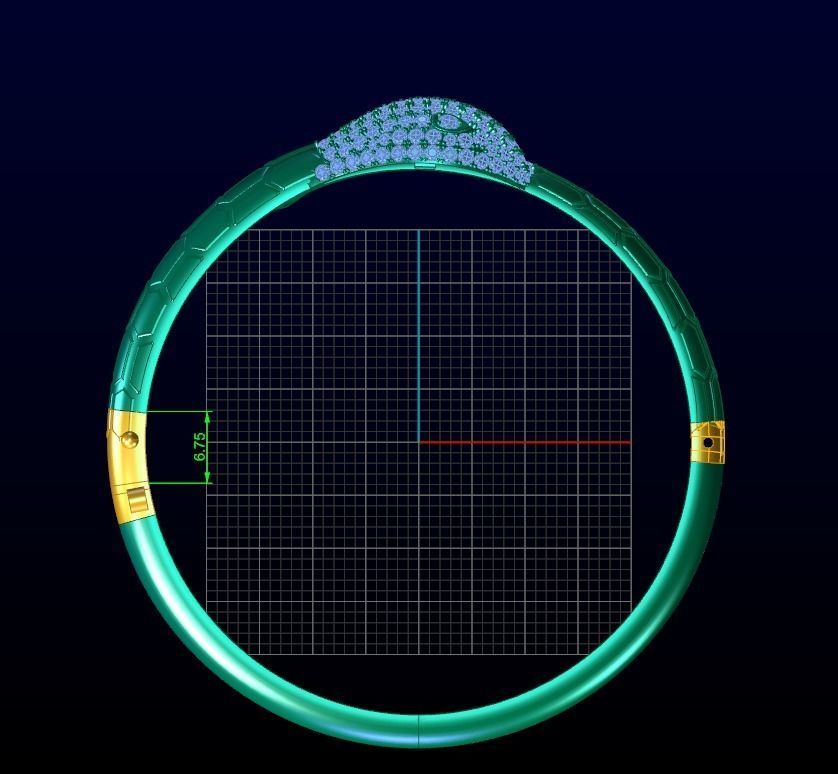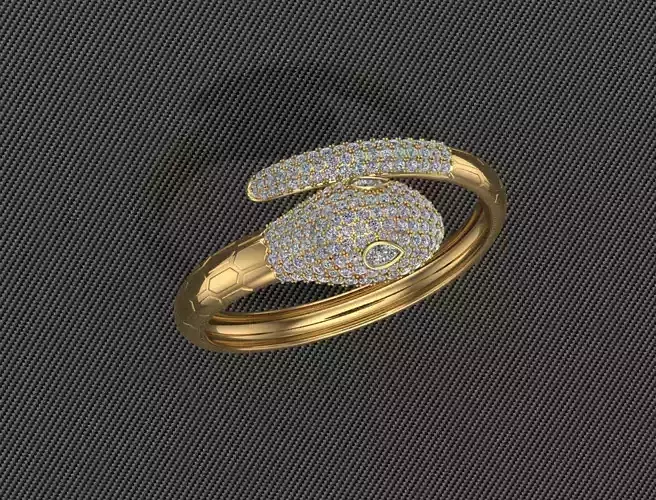
Snake Bracelate 3D print model
This article is about the reptile. For other uses, see Snake (disambiguation).SnakesTemporal range:Late Cretaceous – Present,[1] 94–0 Ma PreꞒꞒOSDCPTJKPgN
Scientific classificationEdit this classificationDomain: EukaryotaKingdom: AnimaliaPhylum: ChordataClass: ReptiliaOrder: SquamataClade: OphidiaSuborder: SerpentesLinnaeus, 1758InfraordersAlethinophidia Nopcsa, 1923Scolecophidia Cope, 1864
Approximate world distribution of snakes, all species
Snake on branchSnakes are elongated, limbless, carnivorous reptiles of the suborder Serpentes (/sɜːrˈpɛntiːz/).[2] Like all other squamates, snakes are ectothermic, amniote vertebrates covered in overlapping scales. Many species of snakes have skulls with several more joints than their lizard ancestors, enabling them to swallow prey much larger than their heads (cranial kinesis). To accommodate their narrow bodies, snakes' paired organs (such as kidneys) appear one in front of the other instead of side by side, and most have only one functional lung. Some species retain a pelvic girdle with a pair of vestigial claws on either side of the cloaca. Lizards have independently evolved elongate bodies without limbs or with greatly reduced limbs at least twenty-five times via convergent evolution, leading to many lineages of legless lizards.[3] These resemble snakes, but several common groups of legless lizards have eyelids and external ears, which snakes lack, although this rule is not universal (see Amphisbaenia, Dibamidae, and Pygopodidae).
Living snakes are found on every continent except Antarctica, and on most smaller land masses; exceptions include some large islands, such as Ireland, Iceland, Greenland, the Hawaiian archipelago, and the islands of New Zealand, as well as many small islands of the Atlantic and central Pacific oceans.[4] Additionally, sea snakes are widespread throughout the Indian and Pacific oceans. Around thirty families are currently recognized, comprising about 520 genera and about 3,900 species.[5] They range in size from the tiny, 10.4 cm-long (4.1 in) Barbados threadsnake[6] to the reticulated python of 6.95 meters (22.8 ft) in length.[7] The fossil species Titanoboa cerrejonensis was 12.8 meters (42 ft) long.[8] Snakes are thought to have evolved from either burrowing or aquatic lizards, perhaps during the Jurassic period, with the earliest known fossils dating to between 143 and 167 Ma ago.[9][10] The diversity of modern snakes appeared during the Paleocene epoch (c. 66 to 56 Ma ago, after the Cretaceous–Paleogene extinction event). The oldest preserved descriptions of snakes can be found in the Brooklyn Papyrus.

